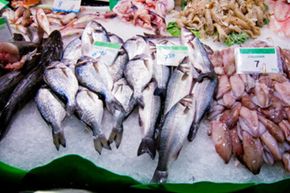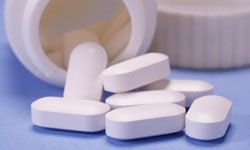Don't let the bad news turn you against fish completely, though. In the 21st century, environmental issues are causing us to rethink the way we do a lot of things -- including the way we evaluate our food supply. Before you head over to the seafood department of your market, do some recon to discover which fish are the safest to eat in a particular season or from a specific region. There are a couple of really helpful Web sites for this. One is the Seafood Watch page hosted by the Monterey Bay Aquarium. If you have a favorite fish, it'll be listed. You'll discover the best geographical source for that fish, and if it isn't recommended at all, the best alternative. (This can be particularly helpful if you're looking for a recipe substitution.)
Another resource for up-to-the-minute seafood related news is the National Listing of Fish Advisories posted by the U.S. Environmental Protection Agency (EPA). It has all the information you'll ever need about fish harvested in U.S. waters. If you're buying locally caught catfish, or your favorite fisherman just walked through the door with dinner in hand, you can peruse the EPA's site for timely safety warnings.
For some general guidelines, these tips will help you determine some safe choices, acceptable alternatives and definite no-nos. The recommendations listed here take into account health considerations as well as environmentally friendly harvesting practices:
- Catfish - Choose farm-raised over freshwater catfish.
- Clams - Both domestic and wild clams are safe to eat.
- Crab - Stick with stone or Dungeness crab, and avoid imported king crab.
- Halibut - Choose U.S. Pacific halibut over Atlantic halibut.
- Lobster - Spiny, American and Maine lobster are safe.
- Mahi Mahi - Choose U.S. over imported varieties.
- Oysters - Avoid Gulf Coast oysters.
- Salmon - When scoping out the best salmon steak or fillet, opt for wild Alaskan salmon over farmed varieties, many of which have tested high for POPs.
- Scallops - Bay, sea and farmed scallops are safe to consume.
- Shrimp - Prefer domestic or Canadian shrimp over imported varieties.
- Swordfish - Choose U.S. over imported swordfish, and limit consumption because of their potential mercury content. (If you are pregnant, use caution in the quantity and variety of fish you consume.)
- Tilapia - Look for U.S. farmed tilapia, and choose it over Asian or South American farmed varieties.
- Tuna - With the exception of bluefin, tuna is considered safe in small quantities, but look for U.S. troll/pole-caught fish. Some good varieties are yellowfin, albacore, skipjack, tongol and bigeye.
We also have some eyes-on suggestions for choosing the best bass or other specimen your fishmonger has to offer:
- If you're considering a whole fish, check the eyes. Fresh, healthy fish have clear, bright eyes.
- Fish should never smell fishy. A good candidate should either have no aroma, or smell faintly of the seashore (or the lake).
- Look for fish with bright, red gills. As a fish ages in the retailer's case, its vivid red color starts to darken.
- Fish should not look dry around the edges.
- Avoid fish with dull, discolored patches or splitting flesh.
- Fish flesh should be resilient to the touch.
- Fish steaks or fillets may seep liquid, but it should be clear, not milky or gooey.
Use your best judgment. You don't have to be a fish expert to have suspicions about a "great" fish deal that may be questionable, or a specimen that looks less than perfect. When in doubt, pass.


